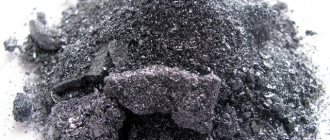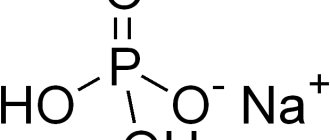About the benefits of flaxseed and flaxseed oil in the human diet
Flaxseed is one of the oldest crops, cultivated since the beginning of civilization. The Latin name for flaxseed is Linum usitatissimum, which means “very useful.” Flax was first introduced to the United States by colonists, primarily to produce fiber for clothing. Every part of the flax plant is used commercially, either directly or after processing. The stem produces good quality fibers with high strength and durability. Until the 1990s, flax was used primarily for textiles (flax) and paper, while linseed oil and its by-products are used in animal feed formulations. In the past two decades, flaxseed has been the focus of increased interest in dietary research due to the potential health benefits associated with some of its bioactive components. Flax seeds are highly nutritional and a rich source of Omega-3 fatty acids: α-linolenic acid (ALA), short-chain polyunsaturated fatty acids, soluble and insoluble dietary fiber, phytoestrogenic lignans (secoisolariciresinol diglycoside-SDG), protein and a variety of antioxidants . Its growing popularity as a food product is due to its health benefits in reducing cardiovascular disease, reducing the risk of cancer, especially breast and prostate cancer, anti-inflammatory activity, laxative effects and reducing symptoms of menopause and osteoporosis. Flax seeds are available in two main varieties: brown and yellow (golden). Both have similar nutritional profiles and the same amount of short-chain omega-3 fatty acids. The exception is a type of yellow flax called solin (trade name Linola), which has a completely different oil profile and contains very few omega-3 fatty acids. Brown flax is best known as an ingredient in paints, varnishes, fibers and cattle feed. There are various edible forms of flax available in the food market: whole flaxseed, ground flax, roasted flax, and flaxseed oil. According to its physicochemical composition, flaxseed is a multicomponent system with biologically active plant substances such as oil, protein, dietary fiber, soluble polysaccharides, lignans, phenolic compounds, vitamins (A, C, F and E) and minerals (P Mg , K, Na, Fe, Cu, Mn and Zn)
Linseed oil
Flaxseed is the richest plant source of α-linolenic acid (ALA), a member of the omega-3 (ω-3) fatty acid family. Flaxseed oil is low in saturated fatty acids (9%), moderate in monounsaturated fatty acids (18%) and rich in polyunsaturated fatty acids (73%). Of all the lipids in flaxseed oil, α-linolenic acid is the major fatty acid ranging from 39.00 to 60.42%, followed by oleic, linoleic, palmitic and stearic acids, providing an excellent Omega-6:Omega-3 fatty acid ratio , approximately 0.3:1. Although flaxseed oil contains many antioxidants such as tocopherols and beta-carotene, traditional flaxseed oil is easily oxidized after extraction and purification. Encapsulation helps to cope with this, as it prevents the interaction of oil with oxygen, which occurs when flaxseed oil is consumed from bottles that must be constantly opened when consumed. The bioavailability of ALA depends on the type of flax eaten. ALA has greater bioavailability in the oil than in the ground seeds, and has greater bioavailability in the oil and ground seeds than in the whole seed. Currently, it is increasingly common to enrich animal diets with flax or flaxseed oil in the production of eggs, milk, meat and other animal products enriched with Omega-3, which cannot but be noted as a positive factor in improving nutrition.
Profile of essential fatty acids in flaxseed oil
| Fatty acid | Percentage (%) (range) |
| Palmitic acid (C16:0) | 4.90-8.00 |
| Stearic acid (C18:0) | 2.24-4.59 |
| Oleic acid (C18:1) | 13.44-19.39 |
| Linoleic acid (C18:2) (ω-6) | 12.25-17.44 |
| α-linolenic acid (C18:3) (ω-3) | 39.90-60.42 |
How to properly prepare and use flax seeds
Friends, it is best to soak flax seeds in water at room temperature a maximum of 8-10 hours before use in the proportions of 1 tablespoon of seeds and half a glass of water. And then chew them thoroughly and eat them. Many people ask whether it is possible to eat whole flax seeds. If you eat them thoroughly without chewing, they will then be excreted from the body in the same form, and there will be practically no benefit from them. If you are not able to chew them, you can first grind them at home using a regular coffee grinder.
But we must keep in mind that it is better not to grind for future use, but to grind the flax grains at most 12 hours before use.
Next, pour one tablespoon of flaxseed flour into a glass, pour water on top and let it sit for several hours.
I usually do these procedures in the evening, and in the morning I take the resulting porridge from flax seeds on an empty stomach half an hour before breakfast to improve and heal the whole body.
Flaxseed dosage for adults or how to use flaxseeds correctly
Flaxseed, like any food rich in fiber, affects digestion. For this reason, flaxseed consumption should start with a small amount (for example, 1 tablespoon of ground flax seeds per day) and gradually increase as needed. To better absorb flaxseed nutrients, flax seeds should be ground before consumption.
To prevent unpleasant side effects, you should drink plenty of water every time you take flaxseed products. (About 1 cup of water per 1 tablespoon of flax seeds).
You can buy flax seeds in both grocery stores and pharmacies. For example, in Moscow, flax seeds can be bought in Auchan hypermarkets. A packet of seeds, packed in 150 grams, costs 33 rubles. And if you buy flax seeds in pharmacies, then white seeds in a 150 gram box cost 68 rubles, and dark flax seeds 200 grams cost 59 rubles. It is better not to buy ready-made flax flour, because if the bags are not sealed and were not stored correctly, then the crushed flax seeds can oxidize very quickly, and instead of helping and making you healthier, they can even harm your body.
Integrating healthy foods into your diet is often easier than you think. Eating healthy, nutrient-dense food combinations enlivens your daily life and gives you more energy and pleasure from eating. After all, food should not only be tasty, but also healthy, and also give strength and delight.
I hope you enjoyed this post and found it helpful. Do you still have questions? Then I’m waiting for you in the comments to discuss.
Friends, be healthy and happy. Best regards, Armen Puzyan.
Share link:
Squirrels
The protein content of flaxseed varies from 20 to 30%, being approximately 80% globulins (linin and conlinin) and 20% glutelin. Flaxseed has an amino acid profile comparable to that of soy and is gluten-free. Although flax protein is not considered a complete protein due to the presence of the limiting amino acid lysine, it contains peptides with biological activity associated with reducing risk factors for cardiovascular diseases. And, for example, cyclolinopeptide A contained in flaxseed has strong immunosuppressive and antimalarial activity, inhibiting the human malaria parasite.
Whole flaxseed and its isolated proteins (in powder form) are rich sources of glutamic acid/glutamine and arginine, branched chain amino acids (valine and leucine) and aromatic amino acids (tyrosine and phenylalanine). The total nitrogen content of flaxseed is 3.25 g/100 g of seeds. Research on flaxseed protein has shown benefits for coronary heart disease, kidney disease and cancer.
Alimentary fiber
Flax dietary fiber includes both soluble and insoluble. The ratio of soluble to insoluble fiber varies from 20:80 to 40:60. The major insoluble fiber fraction consists of cellulose and lignin, while the soluble fiber fractions are mucilage gums. Mucilage gums are polysaccharides that become viscous when mixed with water or other liquids. Just 10 g of flaxseed in your daily diet increases your daily fiber intake by 1 g of soluble fiber and 3 g of insoluble fiber. Insoluble fiber helps prevent constipation, mainly by increasing the bulk of feces and reducing bowel transit time. On the other hand, water-soluble fiber helps maintain blood glucose levels and lower cholesterol levels.
Chemical composition of raw flax seeds
Nutritional value (per 100 grams of unprocessed seeds) [6]
| Calorie content | 534 kcal |
| Squirrels | 18.3 g |
| Fats | 42.2 g |
| Carbohydrates | 28.9 g |
| Alimentary fiber | 27.3 g |
| Water | 6.96 g |
Vitamin composition (in milligrams per 100 grams of untreated seeds)
| Thiamine (B1) | 1,644 |
| Riboflavin (B2) | 0,161 |
| Choline (B4) | 78,7 |
| Pantothenic acid (B5) | 0,985 |
| Pyridoxine (B6) | 0,473 |
| Folic acid (B9) | 87 |
| Ascorbic acid (C) | 0,6 |
| Tocopherol (E) | 0,31 |
| Phylloquinone (K) | 0,0043 |
| Nicotinic acid (PP) | 3,08 |
Nutrient balance (in milligrams per 100 grams of raw seeds)
| Macronutrients | |
| Potassium (K) | 813 |
| Calcium (Ca) | 255 |
| Magnesium (Mg) | 392 |
| Sodium (Na) | 30 |
| Phosphorus (P) | 642 |
| Microelements | |
| Iron (Fe) | 5730 |
| Manganese (Mn) | 2482 |
| Copper (Cu) | 1220 |
| Selenium (Se) | 25,4 |
| Zinc (Zn) | 4340 |
Lignans
Plant lignans are phenolic compounds formed by combining two cinnamic acid residues. Lignans are ubiquitous in the plant kingdom and are present in almost all plants. Lignans act as antioxidants and phytoestrogens. Phytoestrogens have weak estrogen activity in animals and humans. Flax contains 800 times more lignans than other plant foods. The lignan content of flaxseed mainly consists of diglucoside secoisolariciresinol (SDG) (294–700 mg/100 g), metairesinol (0.55 mg/100 g), lariciresinol (3.04 mg/100 g) and pinoresinol (3. 32 mg/100 g). SDG, found in flax and other foods, is converted by bacteria in the gut into the lignans enterodiol and enterolactone, which may provide health benefits due to their weak estrogenic or antiestrogenic and antioxidant effects. Flax lignans have shown promising effects in reducing the growth of cancers, especially those that are hormone-sensitive, such as breast, endometrial, and prostate cancers. Besides lignans, other phenolic compounds found in flaxseed are p-coumaric acid and ferulic acid.
Minerals
As for the composition of minerals, the content of calcium, magnesium and phosphorus stands out, so a 30 g serving of seeds contains from 7% to 30% of the recommended intake. Approximate contents of various minerals are shown in Table 1. One can separately note the high content of potassium (K + ), comparable to the content in bananas in terms of dry matter. High potassium intake is inversely associated with stroke rates, platelet aggregation, oxygen-scavenging free radicals in the blood, and vascular smooth muscle proliferation.
Health benefits
Flaxseed has potential health benefits mainly for 3 reasons: firstly, due to its high content of Omega-3 α-linolenic acid, secondly, it is rich in
soluble and insoluble dietary fiber, and thirdly, due to the high content of lignans, which act as antioxidants and phytoestrogens. ALA can be metabolized in limited quantities in the body to docosahexaenoic acid (DHA) (ω-3) and eicosapentaenoic acid (EPA) (ω-3). The health benefits of all ω-3 fatty acids (ALA, EPA, and DHA) have been widely reported for a variety of pathological conditions, including cardiovascular disease, hypertension, atherosclerosis, diabetes, cancer, arthritis, osteoporosis, autoimmune and neurological disorders. Flaxseed has also been reported to act as an antiarrhythmic, antiatherogenic, and anti-inflammatory agent in addition to improving vascular function.
You can often hear the claim that the benefits of Omega-3 fatty acids can only be obtained by consuming fish oil, and that flaxseed oil is supposedly ineffective. However, it is not. Flaxseed oil has beneficial properties, some of which are comparable to those of fish oil. One very recent study compared the effects of flaxseed oil and fish oil supplements on cardiovascular risk in diabetic patients with coronary artery disease. Participants were randomly assigned to receive either 1000 mg omega-3 fatty acids from fish oil, 1000 mg omega-3 fatty acids from flaxseed oil, or placebo (30 participants in each group) twice daily for 12 weeks. Significant reductions in insulin levels were observed in those who consumed flaxseed oil and fish oil compared to placebo. In addition, a significant decrease in high-sensitivity C-reactive protein (a marker of inflammation) was observed after the use of flaxseed oil. The supplements, compared with placebo, significantly increased total nitrite levels. Additionally, there was a significant increase in total antioxidant capacity and glutathione levels after consuming flaxseed oil and fish oil compared to placebo levels. Overall, this study found positive effects of flaxseed oil and fish oil supplementation on several metabolic profiles, and it suggests that the effect of flaxseed oil in reducing insulin and increasing total nitrite and total antioxidant capacity is similar to fish oil.
A comparison between the effects of flaxseed oil and fish oil supplementation on cardiovascular health in type 2 diabetic patients with coronary heart disease: A randomized, double-blinded, placebo-controlled trial. Raygan F, Taghizadeh M, Mirhosseini N. Phytother Res. 2021 Jul;33(7):1943-1951.
There is clinical evidence of the effects of omega-3 fatty acid supplementation from flaxseed oil on the metabolic status of patients with polycystic ovary syndrome (PCOS). After a 12-week intervention, compared with placebo, omega-3 supplementation in the form of flaxseed oil significantly reduced insulin levels in clinical blood tests. In addition, flaxseed oil supplementation resulted in significant reductions in serum triglycerides, VLDL cholesterol (very low-density lipoprotein cholesterol), and high-sensitivity C-reactive protein compared to placebo. But there were no significant effects of flaxseed oil supplementation on hormonal and other lipid profiles, or plasma nitric oxide levels.
The Effects of Flaxseed Oil Omega-3 Fatty Acids Supplementation on Metabolic Status of Patients with Polycystic Ovary Syndrome: A Randomized, Double-Blind, Placebo-Controlled Trial. Mirmasoumi G, Fazilati M, Foroozanfard F. Exp Clin Endocrinol Diabetes. 2018 Apr;126(4):222-228
Beneficial features
Since ancient times, flax seeds have been used to treat many diseases. They help improve metabolism and lose excess weight. There is another benefit for the fair sex - the seeds contain phytoestrogens, which are so necessary for the normal functioning of the female body.
In addition, the seeds have the following beneficial properties:
- expectorant;
- anti-inflammatory;
- emollient;
- enveloping;
- laxative;
- cleansing.
The plant helps with:
- gastritis;
- bronchitis;
- hypertension;
- atherosclerosis;
- constipation;
- women's diseases;
- inflammation of the urinary system;
- high blood clotting.
Flax seeds can also strengthen the immune system. They are useful for pregnant and nursing mothers. The plant helps with intoxication and serves as a prevention of cancer.
The seeds can cleanse the body of helminths. They help with endocrine disorders and are very useful for thyroid diseases. Particularly useful for autoimmune thyroiditis and diabetes.










